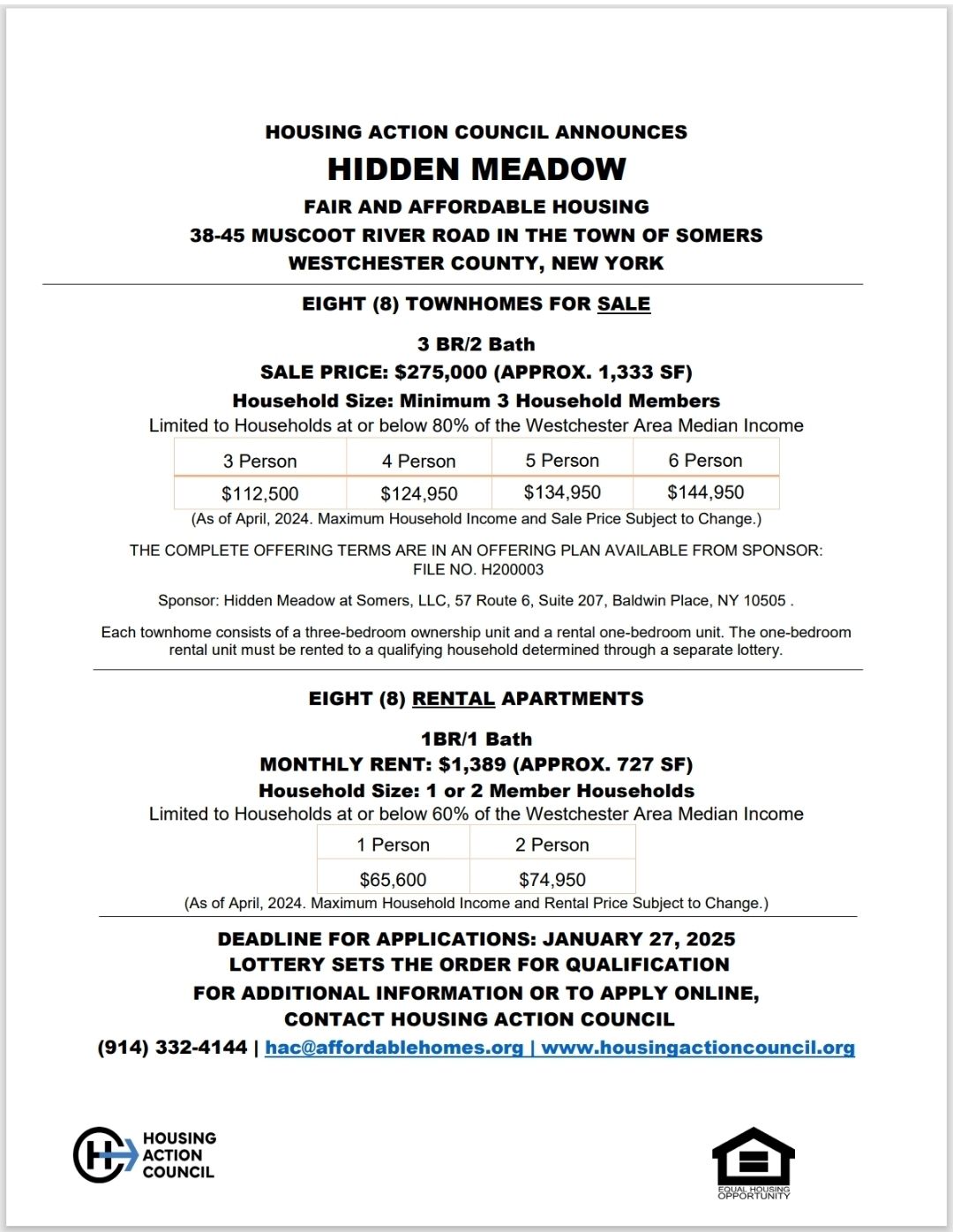County Health Dept Issues Heat Advisory / Some County Beaches & Pools to Open Early
New York State Department of Environmental Conservation (DEC) Interim Commissioner Sean Mahar and State Department of Health (DOH) Commissioner Dr. James McDonald issued an Air Quality Health Advisory for Tuesday, June 18, 2024, for ozone to include the New York City Metro, Lower Hudson Valley, and Western New York regions. Including a Heat Advisory for Westchester County effective from noon on Tuesday, June 18 until 8 p.m. on Wednesday, June 19. The heat is also expected to continue through the end of the week. During this period heat index values are expected to reach between 95 and 100 degrees, and the Westchester County Health Department is warning residents that high temperatures post significant health risks.
Residents are urged to take precautions to protect themselves and their families from the effects of the heat. It is important to stay hydrated, avoid strenuous outdoor activities, and check on vulnerable family members and neighbors.
A Heat Advisory is issued when the combination of heat and humidity is make it feel like it is 95 to 99 degrees for two or more consecutive days, or 100 to 104 degrees for any length of time.
Seniors and those with chronic health problems are at an increased risk. Homes without air conditioning can be much hotter than outdoor temperatures. Use air conditioning to stay cool at home or go to a place that has air conditioning. If you don’t have home air conditioning, continue to seek out cool spaces each day as long as it remains hot.
To reduce risk during outdoor work, the Health Department recommends scheduling frequent rest breaks in shaded or air-conditioned environments.
- Heat stroke is a serious and life-threatening condition that claims many lives nationwide each year. Symptoms include hot red, dry skin, shallow breathing, a rapid, weak pulse and confusion. Call 911 if you suspect heat stroke and immediately cool the overheated person while waiting for emergency help to arrive.
- Another concern during a heat wave is heat exhaustion. Signs include headache, nausea or vomiting, dizziness and exhaustion, as well as cool, moist, pale or flushed skin. Anyone suffering from heat exhaustion should move out of the sun and apply cool, wet cloths to their skin.
Those who plan to travel by car should prepare their vehicle before hitting the road. Always travel with a spare battery and avoid leaving radios, phone chargers and other accessories running when the engine is not. Check to make sure your air conditioning is properly functioning and coolant is at the proper level. If you plan to travel in less populated areas, bring water and an umbrella for shade if it becomes necessary to leave the car. Always keep air flowing throughout the vehicle, and try to park in the shade.
For tips to prevent heat-related illness and places to stay cool, residents can visit the Health Department website at www.westchestergov.com/health.
Residents who need a place to cool off can check the Cooling Center Finder. When it is too hot at home, senior centers, libraries, community centers and indoor malls offer a respite from the heat. Call before you go to be sure of the hours.
The pollutant of concern is: Ozone
The advisory will be in effect 11 a.m. through 11 p.m. The Tuesday, June 18, Air Quality Health Advisory regions consists of: New York City Metro, which includes New York City and Rockland and Westchester counties, Lower Hudson Valley, which includes Dutchess, Orange, Putnam, Sullivan, and Ulster counties, and Western New York, which includes Cattaraugus, Chautauqua, Erie, Genesee, Niagara, Orleans, and Wyoming counties.
DEC and DOH issue Air Quality Health Advisories when DEC meteorologists predict levels of pollution, either ozone or fine particulate matter (PM2.5), are expected to exceed an Air Quality Index (AQI) value of 100. The AQI was created as an easy way to correlate levels of different pollutants to one scale, with a higher AQI value indicating a greater health concern.
OZONE
Summer heat can lead to the formation of ground-level ozone, a major component of photochemical smog. Automobile exhaust and out-of-state emission sources are the primary sources of ground-level ozone and the most serious air pollution problems in the northeast. This surface pollutant should not be confused with the protective layer of ozone in the upper atmosphere.
Ozone is not a direct emission, and is produced indirectly when sunlight chemically reacts with nitrogen oxides (NOx) and volatile organic compounds (VOCs) from automobile exhaust and industrial emissions. High ozone is not as visible as PM2.5 because it is a colorless gas, but will produce hazy skies and reduce visibility in high concentrations.
People, especially those with cardiovascular disease and those who have respiratory disease (such as asthma), young children, those who exercise outdoors, and those involved in vigorous outdoor work should consider limiting strenuous outdoor physical activity when ozone levels are the highest (generally afternoon to early evening). When outdoor levels of ozone are elevated, going indoors will usually reduce exposure. Individuals experiencing symptoms such as shortness of breath, chest pain, or coughing should consider consulting their personal physician.
Ozone levels generally decrease at night and can be minimized during daylight hours by curtailment of automobile travel and the use of public transportation where available.
New Yorkers also are urged to take the following energy-saving and pollution-reducing steps:
- use mass transit or carpool instead of driving, as automobile emissions account for about 60 percent of pollution in our cities;
- conserve fuel and reduce exhaust emissions by combining necessary motor vehicle trips;
- turn off all lights and electrical appliances in unoccupied areas;
- use fans to circulate air. If air conditioning is necessary, set thermostats at 78 degrees;
- close the blinds and shades to limit heat build-up and to preserve cooled air;
- limit use of household appliances. If necessary, run the appliances at off-peak (after 7 p.m.) hours. These would include dishwashers, dryers, pool pumps and water heaters;
- set refrigerators and freezers at more efficient temperatures;
- purchase and install energy efficient lighting and appliances with the Energy Star label; and
- reduce or eliminate outdoor burning and attempt to minimize indoor sources of PM 2.5 such as smoking.
Additional information on ozone and PM 2.5 is available on DEC’s website and on DOH’s website (PM 2.5) / DOH’s website (ozone). A new DEC fact sheet about the Air Quality Index is also available on DEC’s website or by PDF download https://dec.ny.gov/sites/default/files/2024-05/aqiweb.pdf.
To stay up-to-date with announcements from DEC, sign up to receive Air Quality Alerts through DEC Delivers: DEC’s Premier Email Service. A toll-free Air Quality Hotline (1-800-535-1345) was also established by DEC to keep New Yorkers informed of the latest air quality situation.
Additionally, Westchester County will be opening some of its parks, beaches and pools early due to the heat.
- Glen Island’s beach in New Rochelle will be open from Wednesday, June 19 through Sunday, June 23 from 11am to 6:30pm
- Croton Point Park’s beach in Croton will be open from Wednesday, June 19 through Sunday, June 23 from 11am to 6:30pm
- Saxon Woods Pool in White Plains will be open from Wednesday, June 19 through Sunday, June 23 from 1pm to 6:30pm
- Sprain Ridge Pool in Yonkers will be open from Wednesday, June 19 through Sunday, June 23 from 1pm to 6:30pm
Proof of Westchester County residency required at Saxon Woods Pool, Sprain Ridge Pool and Glen Island Beach. Admission fees apply; parking fees apply at Croton Point and Glen Island Beaches.
Elevated heat and humidity can also lead to unhealthy levels of ozone, a gas produced by the action of sunlight on organic air contaminants from auto exhaust and other sources. For air quality updates, go to https://www.airnow.gov. The New York State Department of Environmental Conservation forecasts daily ozone conditions at (http://www.dec.ny.gov), or call the New York State Air Quality Hotline at 1-800-535-1345.
The County’s Department of Emergency Services is monitoring the weather forecast, tracking the opening of local Cooling Centers, and is in contact with Con Edison and NYSEG concerning the potential for power outages.







